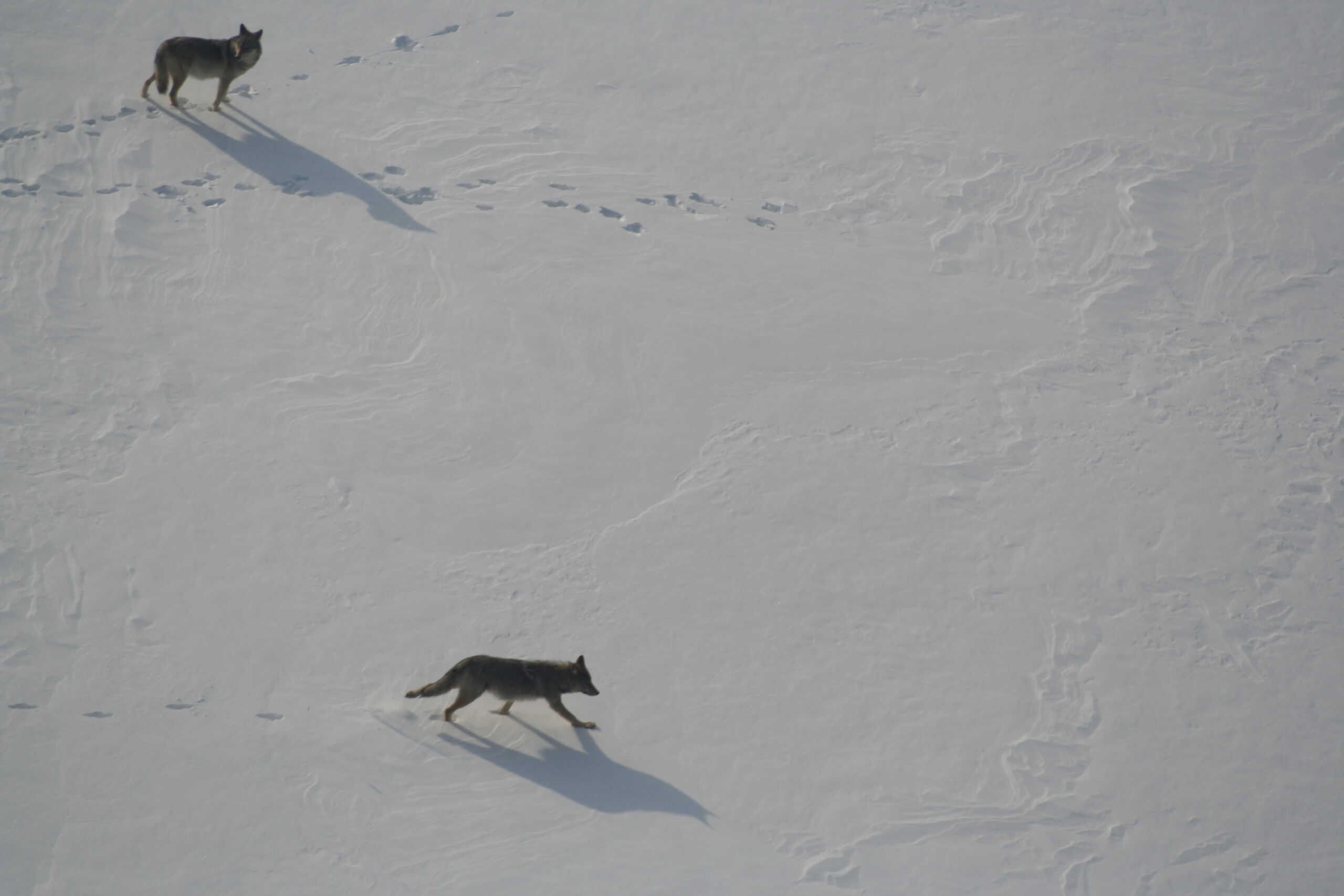Share this article
Wildlife Featured in this article
- Eastern wolf
- Coyote
- Gray wolf
- Red wolf
Eastern wolves are isolated in Algonquin Provincial Park
Survival is low outside of the protected area compared to coyotes and hybrids
An imperiled wolf species survives poorly outside the boundaries of a provincial park in Ontario.
“The two most likely outcomes for eastern wolves outside of the park are death or hybridization,” said TWS member John Benson, an associate professor of wildlife biology at the University of Nebraska-Lincoln.
Eastern wolves (Canis lycaon) were once thought to range more widely across the Great Lakes regions of Canada and the United States, as well as into Quebec, New York state and New England. Ecologically, they are similar to the red wolf (C. rufus) population reintroduced to North Carolina—in fact, some even consider eastern and red wolves to be the same species, though this is debated, Benson said.
But as wolves were extirpated from many of these regions in the East, coyotes (C. latrans) began to move in from the West, colonizing areas in eastern North America left open by the absence of eastern wolves.
The main genetic holdout for eastern wolves is now Algonquin Provincial Park—a protected area in southeastern Ontario about the size of Yellowstone National Park in the U.S., though some are found in and around other protected areas in central Ontario and in pockets of Quebec just across the provincial border.
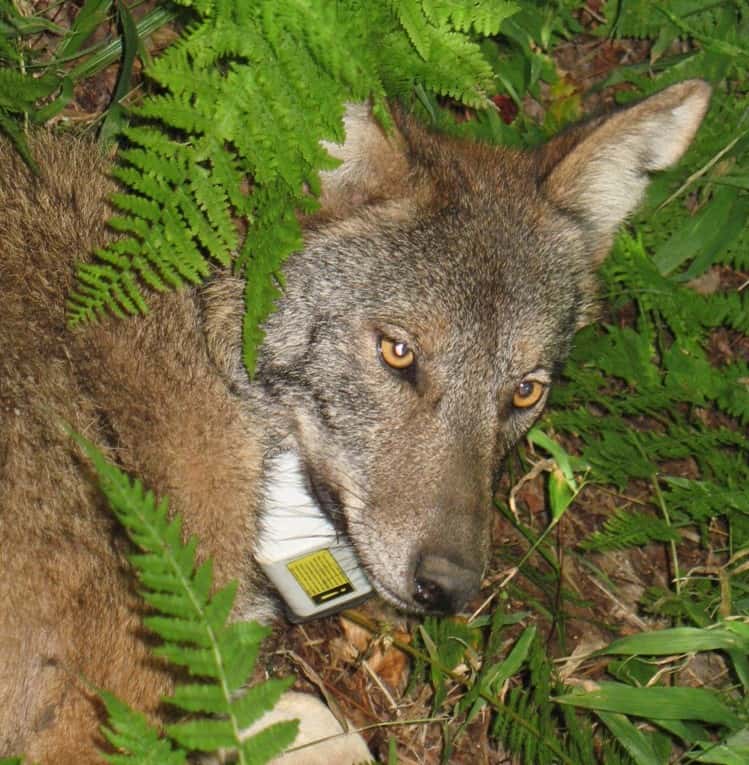
Years of uncertainty
Scientists also dispute the taxonomy of eastern wolves. Previously, some considered them a subspecies of gray wolves (C. lupus), while others argued that they were the result of past hybridization between gray wolves and coyotes. More recently, there has been a general consensus that they are a unique species of wolf native to eastern North America, Benson said. To make things more confusing, regardless of any past hybridization, eastern wolves continue to hybridize with coyotes and Great Lakes wolves.
Benson, then a PhD student at Trent University in Ontario, and his colleagues published a study in 2014 looking at tracking collar data from 2004 to 2011 to determine reasons for deaths in the eastern wolf population. They found that eastern wolves died more from human-related causes outside the boundaries of Algonquin than hybrids or coyotes.
Since that study, in 2015, Canada’s Committee on the Status of Endangered Wildlife recommended the species be listed as threatened, though the country’s Species at Risk Act has not yet acted on that suggestion. The Ontario government did, though, listing it as threatened provincially in 2016.
Following this change, the province made efforts to protect wolves in several smaller areas around Algonquin. They expanded the harvesting ban on any wild canids in Algonquin to include Queen Elizabeth II Wildlands, Killarney, and Kawartha Highlands provincial parks starting in June 2016. Despite being provincially protected, the harvest of eastern wolves and their hybrids is still legal nearly everywhere outside Algonquin and those parks.
Benson and his colleagues recently examined a larger dataset comprising nearly two decades of tracking collar, death data taken from necropsies, and field investigations from 2002 to 2020 to see if anything has changed for the species since these efforts were put in place. They published their findings recently in the Journal of Applied Ecology.
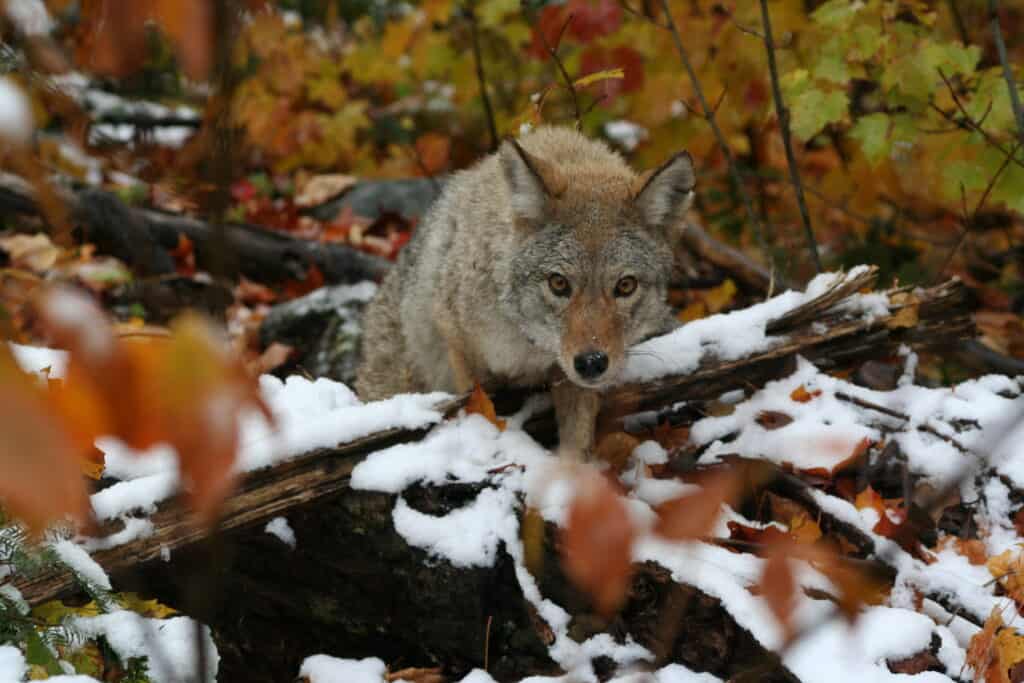
Expanded findings
The eastern wolf’s listing didn’t seem to impact whether more or fewer wolves were dying, they found. In addition, the protections offered to eastern wolves in smaller parks like Killarney and Kawartha Highlands haven’t made much of an impact. This is largely because wolves need lots of space, and usually travel beyond the boundaries of these small protected areas during the hunting and trapping seasons, Benson said.
Benson and his colleagues confirmed what they had found earlier in the 2014 paper. While the eastern wolf population in Algonquin was relatively healthy, the canids struggled outside of the park due to a combination of human factors.
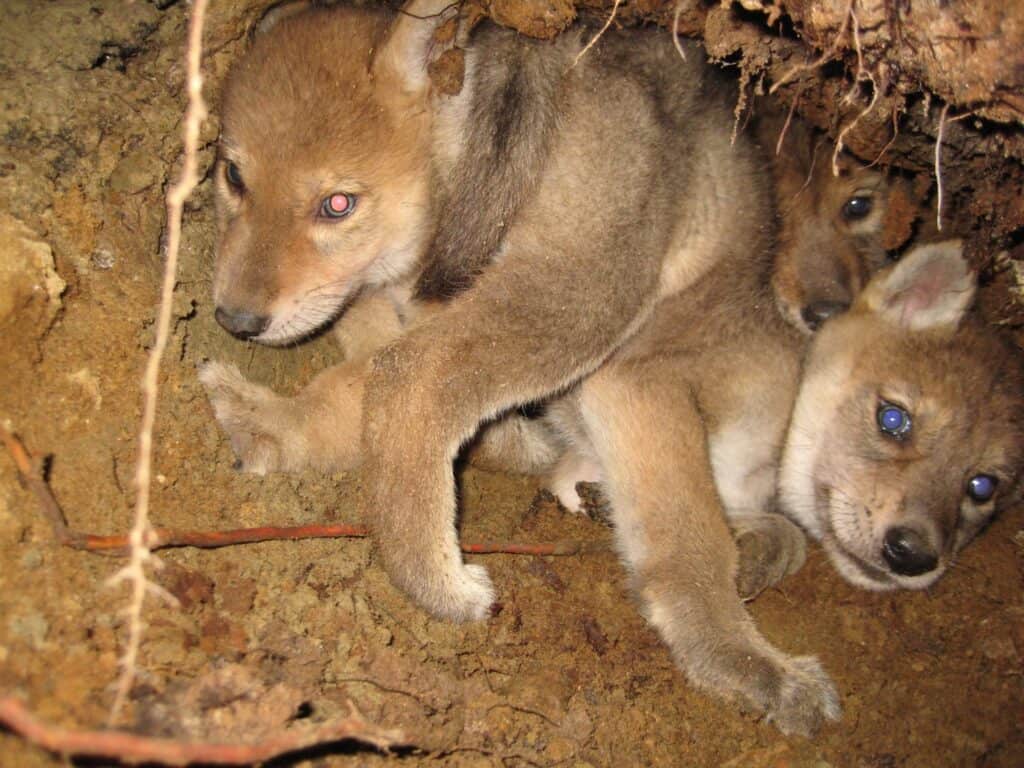
The mortality data revealed that eastern wolves died at a higher rate than hybrids, coyotes or other kinds of wolves due to factors like vehicle strikes and hunting. Benson said that roads are a major cause of both factors. Cars strike canids on roads, but they also provide access to hunters and trappers who harvest eastern wolves.
The research also showed that, on an individual level, if a wolf used areas around roads more often, they had a higher chance of dying than individuals that tended to steer clear of them. Lone wolves were also more likely to die than those in packs, likely because they disperse more and cross unprotected areas more.
Outside the park, there are typically larger populations of coyotes and hybrid canids. While these canids are harvested by hunters and struck by vehicles as well, they don’t get killed at the same rate as eastern wolves. Benson said this may be due to the eastern wolves in Algonquin growing up in a protected area and struggling when they leave.
“When they disperse out of the park, they are naïve to human-caused mortality,” he said.
This would include the wolves that may attempt to disperse from Algonquin to a smaller park. To travel between them, the carnivores would have to cross roads and areas where harvesting is permitted. The smaller parks may also not be large enough to protect a wide-ranging carnivore like wolves.
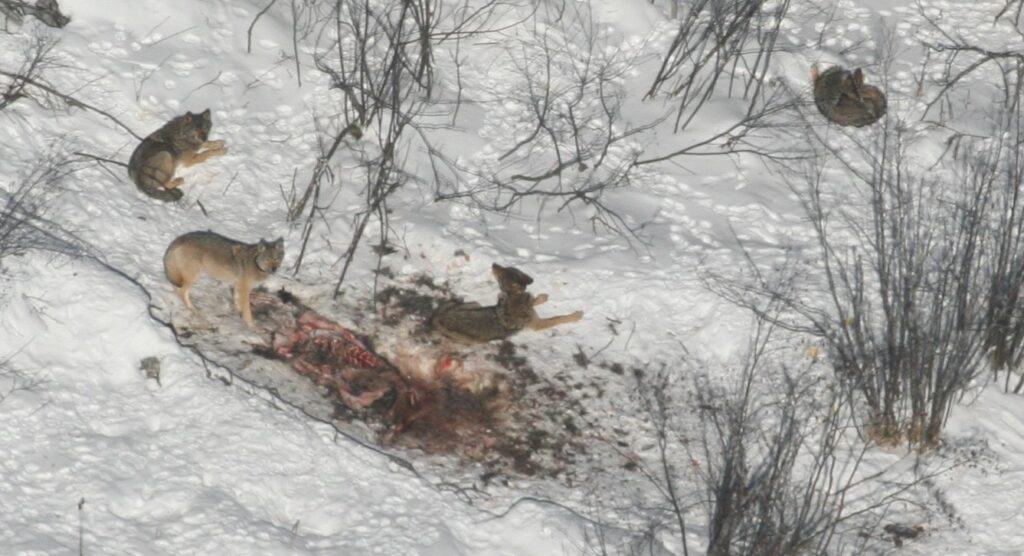
Hybrid issues
But death caused by human factors isn’t the only obstacle to eastern wolf populations dispersing from Algonquin, the team found with previous research. As the wolves leave the park, they enter a world more saturated with coyotes and hybrids. In effect, this means that individuals leaving may be more likely to hybridize, resulting in mixed offspring.
Overall, a combination of a higher chance of death outside Algonquin and a larger chance of hybridizing means that the relatively healthy population of eastern wolves is effectively isolated in the protected area.
This problem is difficult to fix, Benson said. While hunters may not specifically target eastern wolves rather than coyotes or hybrids outside the protected areas, “it would be virtually impossible to make an accurate designation through the sight of a gun,” Benson said, adding that traps wouldn’t discriminate. As a result, a harvesting moratorium on eastern wolves wouldn’t be effective unless it also included moratoriums on hunting and trapping coyotes and hybrids.
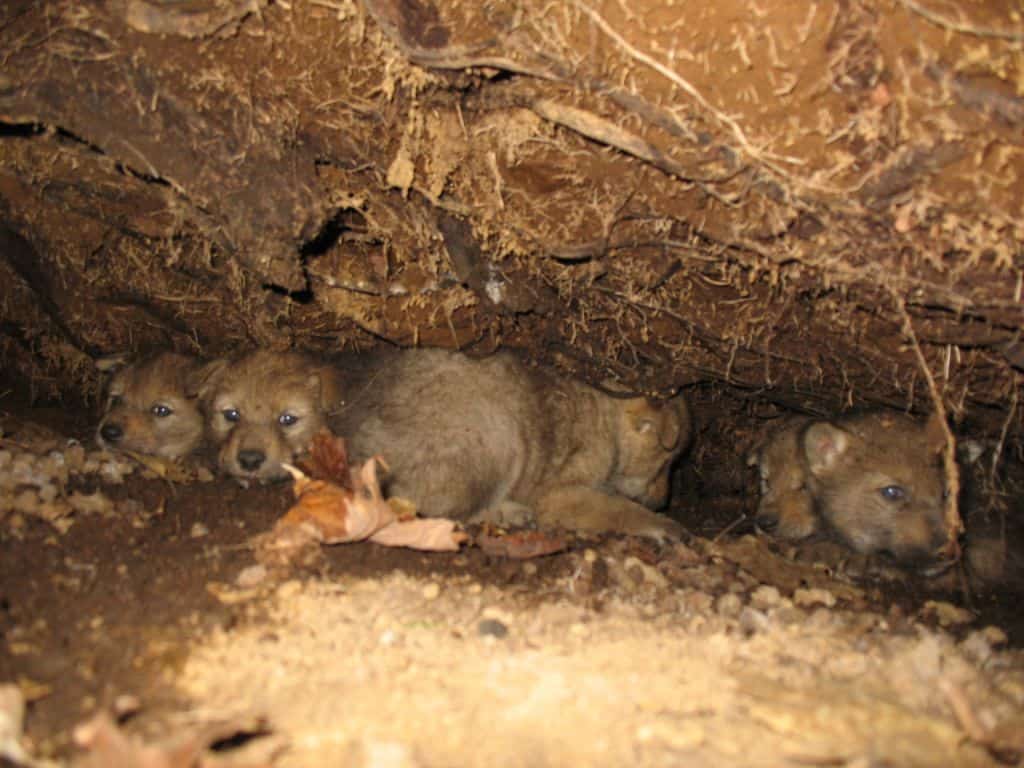
Header Image: The core population of eastern wolves is in Algonquin Provincial Park. Credit: John Benson



